Lantana - The Ultimate Growing Guide from Proven Winners®
This festive flowering shrub blooms nonstop for months, adding long-lasting color to the landscape.
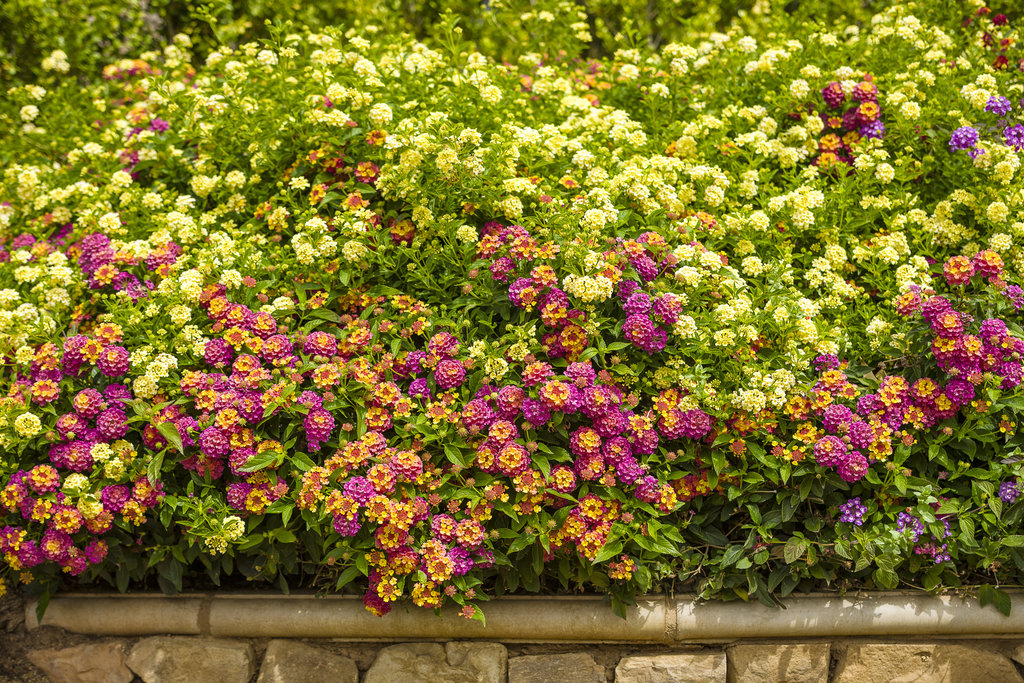
Buy lantana plants - Order online and have them shipped right to your door
There are few plants that give more bang for their buck than lantana. Related to verbena, this flowering shrub can be grown as a perennial in frost-free zones or as an annual in colder climates. Lantana is a workhorse in the landscape, with clusters of tiny flowers that bloom continuously from planting until frost, or nearly year-round in regions where it grows as a perennial. Lantana colors include pink, orange, red, yellow, lavender and white, occurring in single, bicolor or multicolor patterns.
Native to tropical regions of the Americas and South Africa, lantana plant thrives in hot, dry conditions, adding bright color to beds, borders and containers. The flowers attract pollinators such as butterflies, bees and hummingbirds. Here’s how to grow and use lantana in your yard.
PLANTING LANTANA
How to plant: When planting lantana, wait until all danger of frost is past and the soil has warmed up. Grow lantana in a sunny site that receives at least 6 to 8 hours of direct sunlight per day. Follow these steps and space plants 1 to 6 feet apart, depending on the variety and whether you are growing lantana as an annual or perennial shrub.
- Loosen the soil in the planting area. Dig a hole slightly wider and deeper than the root ball.
- Remove the lantana plant from its nursery container and gently tease out roots if potbound.
- Set the plant in the hole with the top of the root ball level with the surrounding soil.
- Backfill the hole with soil, tamp down slightly to remove air pockets and water well.
- Keep plants watered regularly until established.
LANTANA PLANT CARE
Soil: Lantana prefer rich, well-draining soil. For lantana in pots, use a high quality all-purpose potting mix. Make sure containers have adequate drainage holes.
Watering: Keep soil evenly moist but not soggy. Lantana is drought tolerant once established. Water when the top 2 inches of soil is dry, and more often in extreme heat or dry spells. Containers will need more frequent watering.
Fertilizing: Apply a balanced granular fertilizer at the time of planting. For containers, which leach out nutrients more quickly, use a balanced water-soluble fertilizer once a month. Avoid over-fertilizing, which can result in fewer blooms and weak growth.
Pruning lantana: When grown as a perennial shrub, lantana will develop woody growth. In early spring, cut out any dead or diseased branches and prune plants back by up to a third of their size to stimulate new growth.
How to deadhead lantana: Seed-producing lantana plants will benefit from deadheading to promote more flowering and prevent plants from going to seed. Cut off spent flowers as soon as they finish blooming.
How to make lantana bushy: Lightly prune stem tips to encourage more branching and flower buds and lightly shape as needed.
TRY THESE PROVEN WINNERS® VARIETIES
Lantana comes in different flower colors, plant sizes and growth habits. Try these lantana varieties in your landscape:
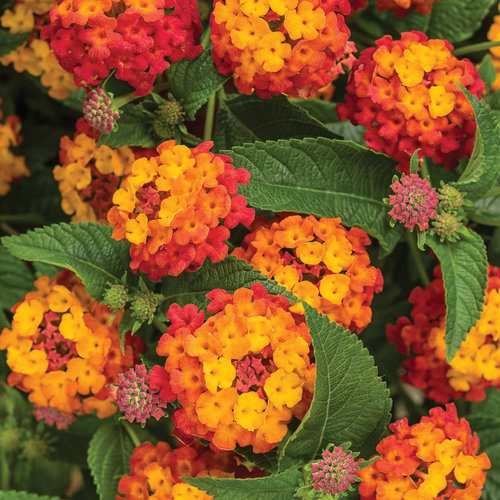 Luscious® Citrus Blend™ (Lantana camara) produces sweetly fragrant flowers in vibrant shades of yellow, orange and red. Plants can reach 20 to 30 inches tall and wide in a single season. Use this bushy variety in borders and mass plantings. |
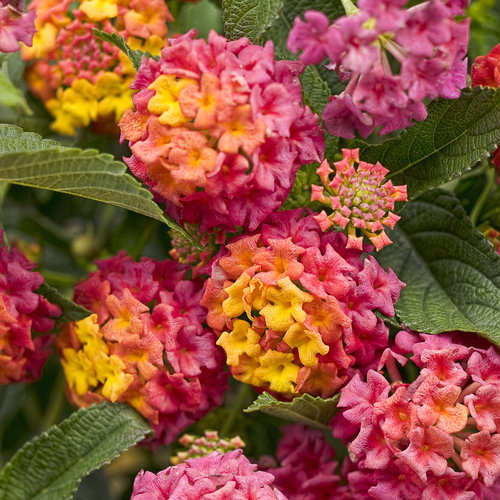 Luscious® Berry Blend™ (Lantana camara) is a vigorous grower with flowers in warm tropical hues of yellow, orange and coral-pink. The upright spreading habit is versatile in beds, borders and mass plantings. |
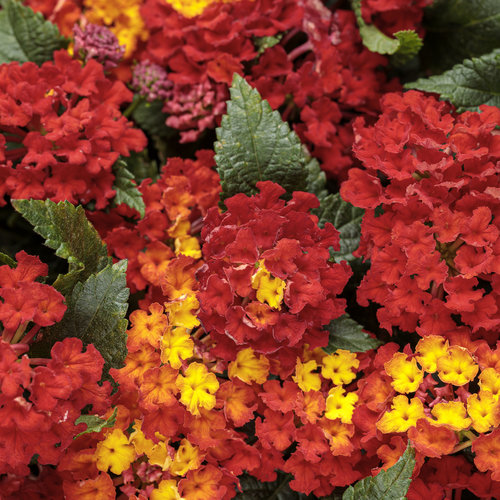 Luscious® Royale Red Zone™ (Lantana camara) is a red lantana that produces tightly packed clusters of brilliant orange-red blooms with occasional orange and yellow florets. The compact mounding habit is suitable for containers and mass plantings. Plants are sterile, so are noninvasive in hotter climates. |
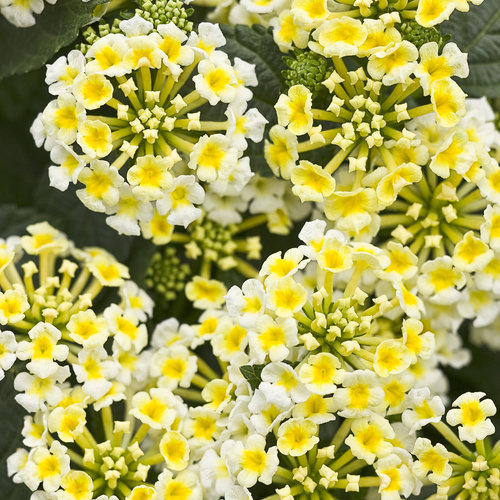 Luscious® Royale Piña Colada™ (Lantana camara) is a yellow and white lantana named for the pineapple yellow and coconut white flowers that add sunny color to the landscape. Dark green foliage has a citrusy scent. The compact mounding habit is versatile in containers, beds and mass plantings. Plants are especially heat tolerant. |
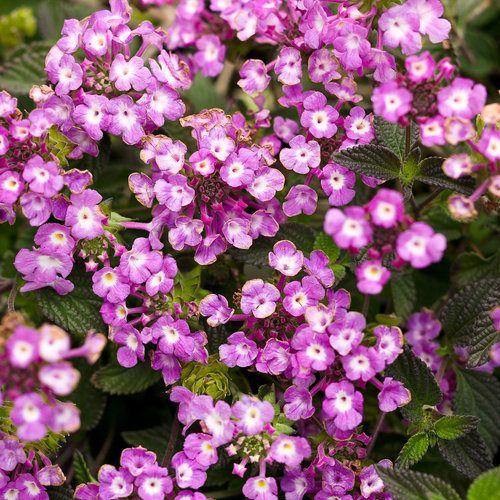 Luscious® Grape (Lantana montevidensis) is a trailing lantana with bright lavender-purple flowers that pair well with many other flowers colors. Plant this trailing variety as a spiller element in containers, hanging baskets or window boxes. Mass purple lantana as a ground cover along a slope or allow to cascade over a rock wall. |
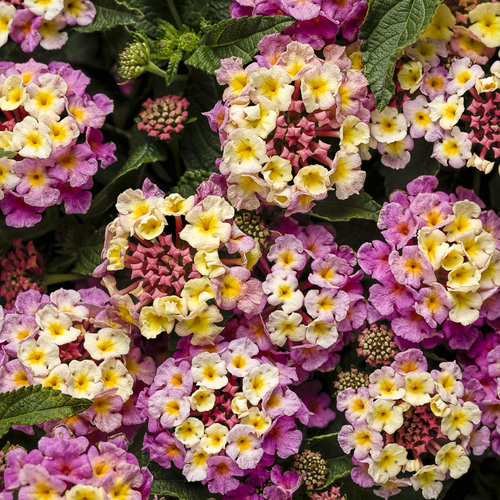 Luscious® Pinkberry Blend™ (Lantana camara) blooms in appealing tones of pink, yellow and creamy white. Flowers have a light, sweet fragrance. Plant this mounding variety in containers or use for edging beds and borders. |
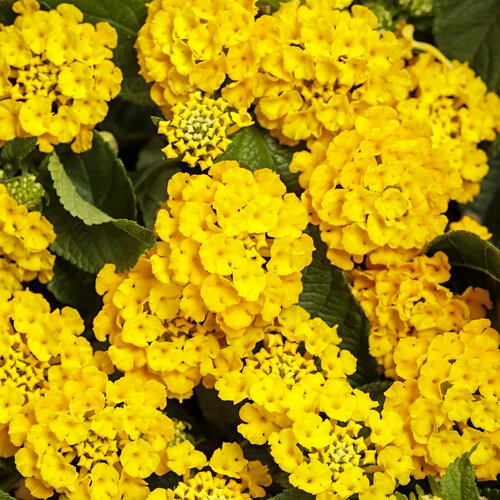 Luscious® Royale Lemon Tart™ (Lantana camara) is a yellow lantana with rich lemony flowers that pair well with complementary hues of purple and blue. Plants produce few seeds, so are not invasive in hotter climates. The compact bushy habit is versatile in containers, beds and mass plantings. |
|
LANTANA FAQ’s
Is lantana a perennial?
Lantana is a perennial shrub in USDA zones 9-11. In colder regions, treat lantana as an annual or overwinter indoors.
Does lantana grow fast?
In optimal conditions, lantana grows quickly. Plants can be trimmed back as needed to promote branching and control growth.
Is lantana easy to grow?
When given the right growing conditions of full sun, fertile soil and regular water, lantana is an easy-care plant, even for beginner gardeners.
Do lantanas come back every year?
In frost-free regions, lantana planted outdoors comes back from year to year. In colder climates, lantana can be treated as an annual or overwintered indoors.
Is lantana poisonous?
All parts of lantana plant are toxic to pets and children. Leaves can cause skin irritation. The berries are the most poisonous part of the plant and can be deadly if ingested.
Why is lantana a problem?
Lantana can be invasive in warmer regions including parts of California, Florida, Texas and Hawaii. Cut off spent lantana flower heads to prevent seeds from forming and spreading.
Where is the best place to plant lantana?
Provide a site that receives full sun and has good soil drainage. Provide good air circulation to prevent powdery mildew and other diseases.
Does lantana need full sun?
Lantana performs best in a sunny location that receives 6 to 8 hours of full sun per day.
Do deer eat lantana?
The leaves of lantana have a pungent scent and rough texture that deer find distasteful.
Do hummingbirds like lantana?
The colorful flowers of lantana are highly attractive to hummingbirds as well as many beneficial insects.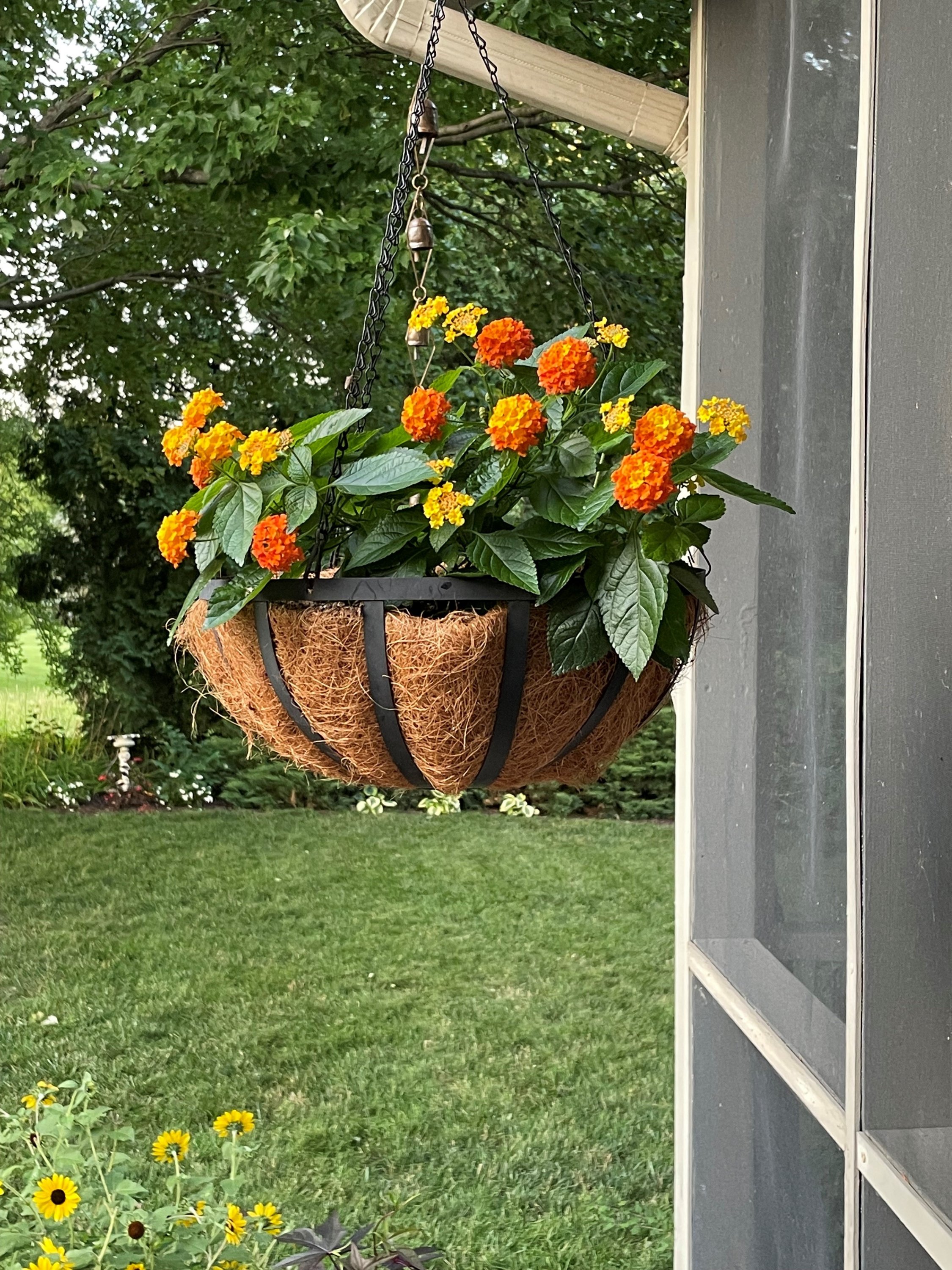
LANTANA LANDSCAPING TIPS
There are many ways to display lantana in your landscape. Here are some ideas:
- In warmer regions, use lantana perennial shrubs in foundation plantings, as hedging, in mixed borders or mass plantings.
- Plant a container with a smaller lantana specimen in combination with other warm-season annuals with similar growing needs.
- Mass a lantana ground cover variety along a slope or in a border.
- Create a lantana hanging basket using a mounding or trailing variety by itself or in combination with other plants.
- Use a mounding type of lantana in a bed or container as a filler element in combination with a thriller plant such as an ornamental grass and trailing plants such as sweet potato vine or lobelia for a “thriller, filler, spiller” effect.
- Plant a butterfly garden using lantana and other plants that butterflies love such as pentas, ageratum and phlox.
- Mass lantana in a border with other colorful heat-tolerant plants such as coleus, ornamental grasses, cleome and petunias for months of continuous color.
- Feature a larger variety as a stand-alone focal point in a bed or container to make a statement.
- Use a mounding or ground cover lantana variety to edge a pathway or mixed border.
LANTANA COMPANION PLANTS
Combine lantana and other plants with similar cultural needs of full sun, rich well-draining soil and regular water.
For hanging baskets and window boxes, plant an upright or mounding lantana variety with:
- Superbells® Plum calibrachoa
- Proven Accents® Sweet Caroline Sweetheart Lime sweet potato vine
- Supertunia® Really Red petunia
- Colorblaze® Chocolate Drop coleus
For beds and borders, mass a ground cover or mounding lantana variety alongside:
- Angelface® Blue angelonia
- Vermillionaire® firecracker plant
- Graceful Grasses® King Tut® Egyptian papyrus
- Unplugged® So Blue™ mealycup sage
For containers, use an upright or mounding variety as a filler element in combination with:
- Graceful Grasses® purple fountain grass
- Toucan® Coral canna lily
- Superbena® Imperial Blue verbena
- Sunsatia® Coconut nemesia
Buy Proven Winners plants:



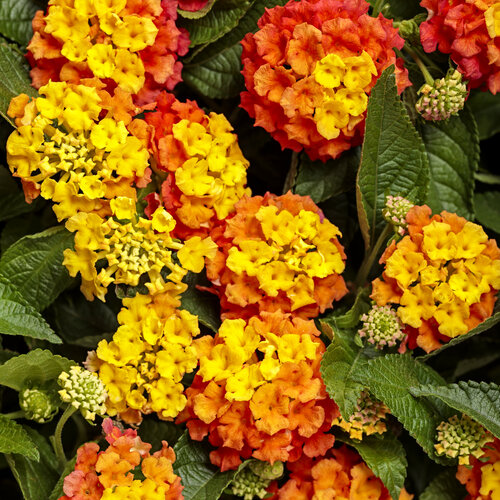 Luscious® Basket Tangelo™
Luscious® Basket Tangelo™
